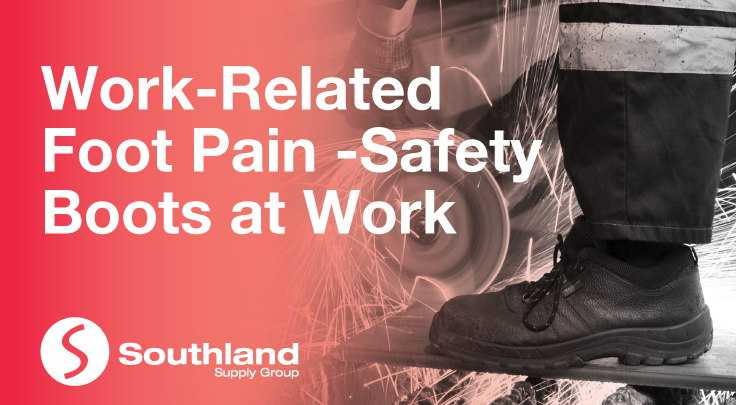
If you’re one of the thousands of Australians who work on their feet each day, you most likely have experienced swelling, blisters, aching, shin splints, leg pain and perhaps even more serious injuries that can accompany long periods of standing without wearing the proper safety boots. For employers, making sure that your team is not suffering from work related foot problems is essential in improving productivity, reducing absenteeism, and avoiding potential work cover claims.
Based on reports in 2013-2014, there were 3,957 serious claims brought against employers for injuries related to the feet and toes. As an employer, it is your responsibility to ensure that the workplace is safe and without risks to health. This means that the design of every area in your workplace, internal policies and appropriate rest breaks must be monitored to provide optimal protection for the feet. It is also important to make sure that employees are equipped with the right safety boots for the job to minimise the risk of foot problems in your workforce.
Who is most at risk of foot problems at work?
Anyone who spends long hours on their feet risks potential injury. However, there are some workplaces and industries that are more prone to work-related foot pain, including:
- Construction sites
- Warehouse and distribution centers
- Manufacturing production lines
- Hospitality venues such as industrial kitchens and restaurants
- Laboratories
- Retail
- Hospitals
- Manual workshops
How Safety Boots help to reduce the risk of foot problems at work
60% to 70% of encounters foot problems at some point in our lives, wearing the right safety boots for the job should always be a priority. Appropriate safety footwear provides adequate protection from injury and comfortably supports the feet.
Safety work boots are essential to protect our feet from occupational hazards and are part and parcel of virtually every manual labour job in Australia.
Some occupations have specific safety footwear requirements such as steel cap work boots for construction workers or chemical resistant boots for laboratory workers. However, as a general guideline, safety boots should be:
- Well-fastened and enclosed
- Sturdy, with a wide heel and firm back to support the ankle
- Cushioned for comfort
- Sporting a sensible sole that is non-slip and oil resistant
- Well fitted to the shape of your feet
- Kept clean and stored in a cool, dry place away from sunlight
Your feet work hard, and so do you. Like any other work-related injury, foot injuries are often preventable when employees and the employers work together to create a safe work environment where risks are minimised, and necessary rest periods are provided.
At Southland Supply Group, we are committed to providing the most innovative and comfortable safety footwear designed to endure in the toughest Australian conditions. Our range includes work boots and safety shoes in a variety of styles, including zip-side work boots, lace-up work boots, steel toe cap work boots, gumboots and more.
